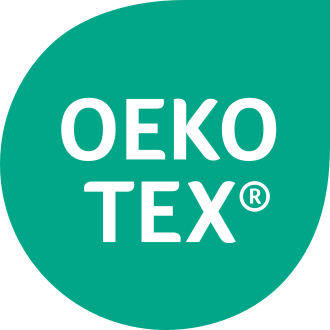
OEKO-TEX® STANDARD 100: The Label That Keeps Fashion Safe
Explore the OEKO-Tex® Standard 100 for a greener future in fashion.
Our Commitment
When shopping for clothes labeled “eco” or “non-toxic,” it’s easy to feel lost in marketing claims. The OEKO-TEX® STANDARD 100 label is your shortcut to peace of mind — it ensures that every thread, button, and zipper in a garment has been independently tested for harmful substances.
At LivableFit, we highlight OEKO-TEX® as one of our key sustainability benchmarks. It protects what matters most — your skin, your health, and the planet — by ensuring that certified textiles are safe, clean, and responsibly made.


What Is OEKO-TEX® STANDARD 100?
The OEKO-TEX® STANDARD 100 is one of the world’s best-known independent testing and certification systems for textiles. Introduced in 1992 by the International Association for Research and Testing in the Field of Textile and Leather Ecology, it has become the global reference for chemical safety in fashion.
If a product carries the STANDARD 100 label, you can be certain that every component — from fabric to thread, print, and button — has been tested for harmful substances and found safe for human use.
This makes OEKO-TEX® STANDARD 100 one of the most widely recognized consumer protection labels in the textile world
What Does OEKO-TEX® STANDARD 100 Test For?
Each certified product undergoes a strict testing process for hundreds of regulated and non-regulated substances known to be harmful to human health.
The standard includes substances such as:
Banned azo dyes and formaldehyde
Heavy metals like lead, cadmium, mercury, and nickel
Per- and polyfluorinated compounds (PFAS/PFCs)
Phthalates, chlorinated phenols, and carcinogenic dyes
Allergenic colorants and volatile organic compounds (VOCs)
Importantly, OEKO-TEX® goes beyond legal requirements — it screens for substances not yet regulated by law but scientifically recognized as potentially harmful.
Product Classes: Safety for Every Use
The certification distinguishes between four product classes, reflecting how closely the item comes into contact with your skin:
Product Class I – Textiles for babies and toddlers up to 3 years old.
Product Class II – Textiles with direct skin contact (e.g., T-shirts, underwear, bedding).
Product Class III – Textiles without direct skin contact (e.g., jackets, fillings).
Product Class IV – Decorative or furnishing materials (e.g., curtains, upholstery).
The stricter the contact, the tighter the limits — baby textiles face the most rigorous criteria.
Annex 4 and Annex 6: Two Testing Levels
The OEKO-TEX® STANDARD 100 offers two annexes:
Annex 4: The fundamental health-based requirements.
Annex 6: An extended version that includes additional chemicals related to environmental impact, helping companies committed to cleaner production.
Annex 6 aligns with global Detox Campaign initiatives, pushing brands toward safer and more sustainable manufacturing practices.
Why OEKO-TEX® STANDARD 100 Matters for Sustainable Fashion
While OEKO-TEX® isn’t an environmental or social certification like GOTS or Fairtrade, it plays a crucial role in consumer health and transparency.
Here’s why it matters:
✅ Protects consumers — no harmful chemicals or residues touching your skin.
✅ Encourages safer production — suppliers must remove toxic substances from their processes.
✅ Supports global chemical transparency — limits align with regulations such as REACH, US CPSIA, and EU POPs.
✅ Builds trust — one of the most recognized textile labels worldwide, used by over 21,000 companies.
For LivableFit users, it’s a key sign that a brand takes material safety and responsibility seriously.
How Products Get Certified
Obtaining the STANDARD 100 label involves multiple steps:
Application & sample submission to an approved OEKO-TEX® institute.
Laboratory testing of all components — including threads, prints, and zippers.
On-site audit and quality assurance checks.
Certificate issuance, valid for one year.
Annual renewal with updates to reflect stricter limits or new substances.
Every certified product receives a unique certificate number that can be verified through the official OEKO-TEX® website.
Examples of OEKO-TEX® STANDARD 100 Certified Brands
At LivableFit, we recommend brands that go beyond marketing and prove safety through certification. Some examples include:
Armedangels – Everyday essentials made without harmful chemicals.
Nudie Jeans – Denim produced with certified safe dyes and finishes.
People Tree – Ethical fashion meets both social and material safety standards.
FAQs
What does OEKO-TEX® STANDARD 100 mean in fashion?
It means every component of the garment has been independently tested for harmful substances and deemed safe for human use.
Is OEKO-TEX® better than GOTS?
They complement each other. GOTS focuses on organic fibers and social criteria, while OEKO-TEX® ensures that no toxic chemicals remain in the finished textile.
Does OEKO-TEX® test for PFAS?
Yes — PFAS (forever chemicals) are included in the banned substance list under both Annex 4 and Annex 6.
Shop Smarter with LivableFit
Choosing OEKO-TEX® STANDARD 100 certified clothing means choosing safety, quality, and peace of mind.
At LivableFit, we use the LivableFit Advisor™ to help you identify items that meet trusted standards like OEKO-TEX®, GOTS, and Fairtrade — so you can shop sustainably, confidently, and without greenwashing.
💡 Try it now: Paste any product link into the LivableFit Advisor and instantly see its sustainability score — plus safe, certified alternatives.
“OEKO-TEX® certification gave us and our customers complete confidence in fabric safety. Knowing every material is tested for harmful substances helps us create fashion that truly cares for people and the planet.”
Sarah R.


★★★★★
LivableFit
LivableFit Advisor™ helps you check how sustainable your clothing choices really are.
Instantly evaluate fashion items with real-time data, uncover eco-scores, detect greenwashing, and discover more responsible alternatives — all powered by AI.
CONTACT
Based in Berlin, supporting conscious shoppers across Europe.
quick links 🔗
join our community 🌿
Brands We Support (coming soon)
© 2025 LivableFit. LivableFit Advisor™ is a trademark of LivableFit. All rights reserved.
